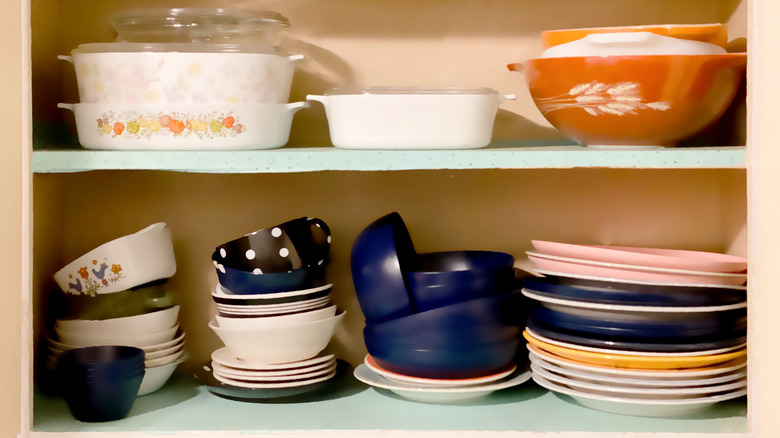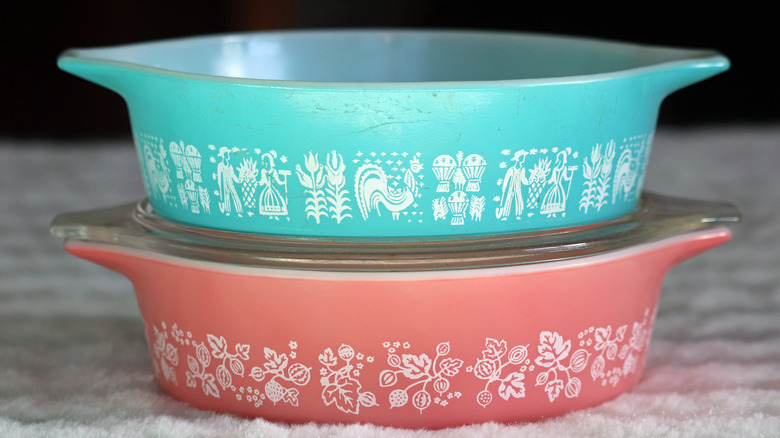The Vintage Dishware That's Likely To Contain Lead (And How To Test For It)
We may receive a commission on purchases made from links.
Sustainability is thankfully in vogue these days, and that goes for just about all categories of consumerism. This means there are a lot of vintage kitchen items making a comeback, which is wonderful and mildly frightening at the same time. Dishware made prior to 1972 wasn't subjected to the same rules implemented by the Food and Drug Administration to stop food items from being produced with leachable lead, including the beloved brand, Pyrex. Before you go trashing your new-to-you Pyrex collection (please don't), there are some important tidbits to know. First, it isn't necessarily the Pyrex dishware itself that may contain leachable lead, but the intricate and often whimsical designs that adorn the outside of many pieces. Second, lead-based paint was banned in 1978, so it might pay to know which decade your vintage Pyrex is from.
As for the pieces that may pose a risk, research shows that externally decorated glassware is more likely to contain high amounts of leachable lead. Lead is toxic to humans, and exposure can cause anything from developmental delays in young children to kidney dysfunction in adults. If you're unsure whether your vintage dish contains lead, you can check with a lead test swab kit. If you find that there is lead on the dishware, even if it's just on the outside, it's best not to use it for food purposes. Instead, you now have a beautiful piece of history to display in your home.
Is vintage Pyrex worth the chance of lead?
Testing all of your vintage Pyrex may get tiring, but honestly, you probably should be swabbing all of your vintage finds for traces of lead. There's no need to stop seeking out vintage Pyrex cookware. In fact, there's actually some benefit to vintage Pyrex. Until the 1950s, Pyrex was manufactured with borosilicate glass. This glass can withstand going from high heat to cool temperatures without a high risk of thermal shock. This phenomenon occurs when rapid, extreme temperature shifts prompt glassware to crack or shatter. This feature makes vintage Pyrex especially dreamy when something needs to move from the oven to the fridge rather quickly.
After the 1950s, Pyrex switched to thermally tempered soda lime glass. This glass is still durable and less expensive for the company to produce, but it's just not as incredible as its borosilicate predecessor. So if you're going to shop for vintage, it's a safe bet to keep lead testing swabs in your home just in case — especially if you're bringing home the beautifully designed pieces that invoke nostalgia in so many of us. Just make sure you know how to tell the difference between vintage Pyrex and modern Pyrex so you get exactly what you're looking for.

